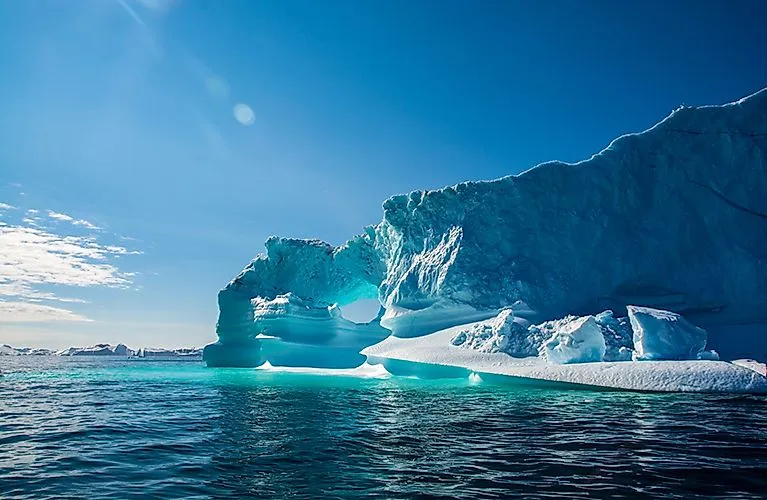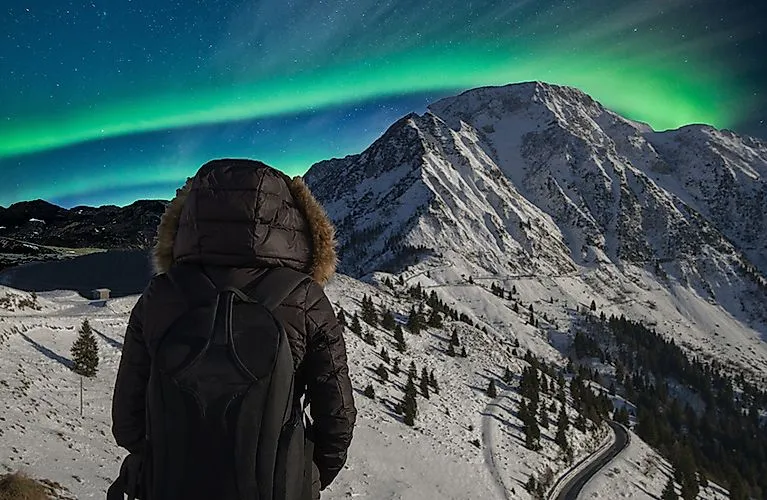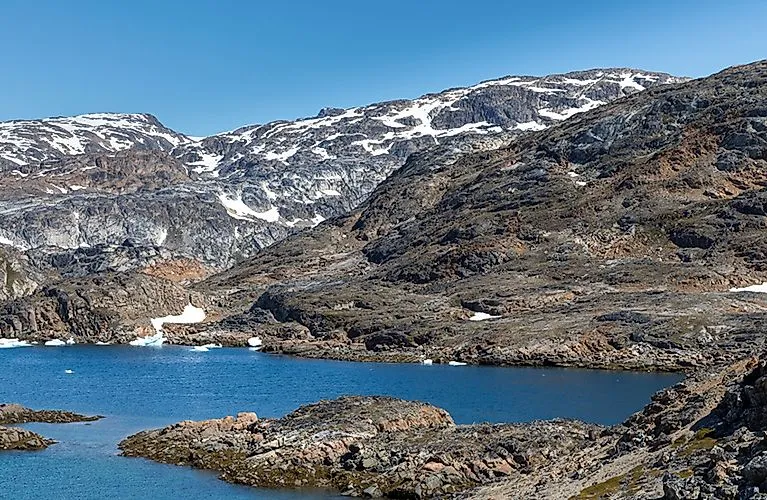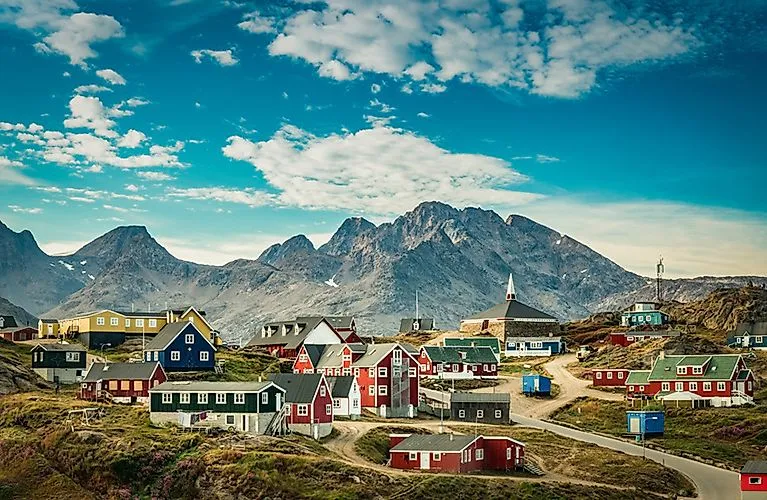Where is Greenland?

At 2,166,086 km², Greenland is the largest island in the world and lies in the North Atlantic between the Arctic Ocean and the Arctic Ocean - to the northeast of Canada and northwest of Iceland. With an area of around 2.16 million square kilometers, Greenland is six times the size of Germany - around 80% of which is covered by a mighty ice sheet. Greenland's north coast is the closest large contiguous land mass to the North Pole at a distance of 710 km.
There are only permanently inhabited settlements along the ice-free coastal strips in the south and west. A total of around 56,000 people live in Greenland; apart from Antarctica, the island in the far north has the lowest population density in the world. The capital Nuuk is located in the southwest and is also the largest city in the country with around 19,000 inhabitants.
Since 2009, Greenlandic has been the sole official language according to the Self-Government Act. It belongs to the Eskimo-Aleut family of languages and is spoken by the majority of the population. Danish is mainly used in administration, education and in contact with the mother country Denmark.
Webcams in Greenland
The climate in Greenland

The polar and partly sub-polar climate ensures temperatures well below freezing, especially in winter. The extreme value measured inland is -66.1°C. On the west coast, the climate is moderated by the Greenland Current. In the town of Ilulissat, temperatures of up to 25°C have been measured in summer. The upward curving inland ice prevents Greenland from having windless weather. During the Medieval Warm Period, lush vegetation developed along the south-western coast. The Vikings who immigrated from Europe therefore referred to the island as Greenland, from which today's name is derived. You can use our webcams in Greenland to get an impression of the unique nature and atmosphere of Greenland before your trip.
The fascination of nature

The gigantic ice sheet that covers Greenland is up to 3,400 meters thick in places, and only 18.9% of the island is ice-free. A complete melting of the ice masses would cause the global sea level to rise by 7.4 meters. A gently undulating highland spreads out to the south, running along the coast into numerous fjords and bays. The edge of the highlands is surrounded by very high mountains. The fauna is extremely species-rich, although there are no amphibians or reptiles in Greenland. Plant growth is generally very low, although there are almost 600 species of higher plants and 3,000 species of mosses, lichens and algae. Only in the extreme south do trees grow sporadically.
Greenland's population
The colonization of Greenland began around 4,500 years ago, when the first Inuit settled on the island. They were followed 3500 years later by members of the Thule tribe, these Inuit are the ancestors of today's Greenlandic population. At the same time as the members of the Thule tribe, settlers from Iceland arrived on Greenland; they were the first who did not come from an Inuit culture. From the locals' point of view, those 88% of the population who are predominantly descended from the indigenous people are called Greenlanders. In the legal sense, every person who has Danish citizenship and resides in Greenland is a Greenlander.
What can you do in Greenland?

Greenland is a paradise for adventurers and nature lovers - rugged, pristine and impressively diverse. Visitors to the largest island in the world can experience spectacular nature up close. Hikes through arctic tundra landscapes, along fjords or to glaciers are among the most popular activities in summer. Particularly impressive is the Ilulissat Icefjord, a UNESCO World Heritage Site, where huge icebergs drift into the sea. In winter, dog sledding, snowshoe hikes and Northern Lights viewing are alluring. The colorful glow of the northern lights over the snow-covered landscape is an unforgettable experience. Whale watching - especially of humpback and minke whales - is also a highlight in the summer months, for example in Disko Bay. Tasiilaq, the largest settlement on the east coast, surrounded by rugged mountains and glaciers, is also particularly attractive. With the live cams, you can get an incomparable view of nature and see Greenland's beauty for yourself.
